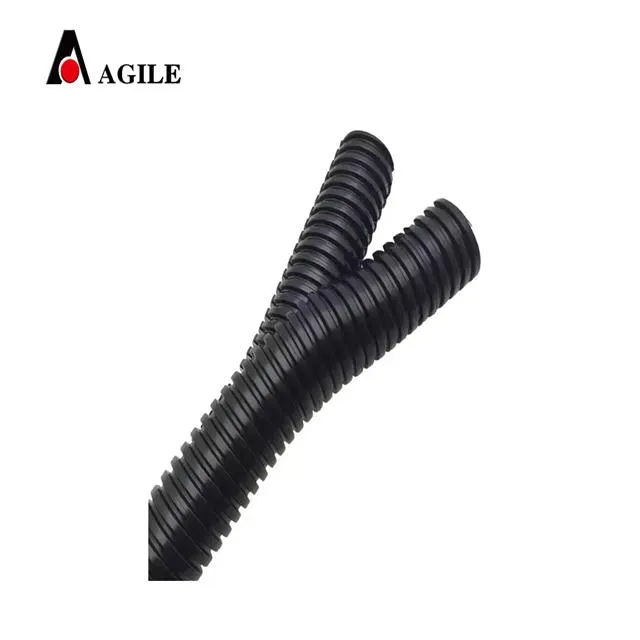drag chain cable carrier
Understanding Drag Chain Cable Carriers Essential Components for Industrial Applications
In modern manufacturing and industrial settings, the movement of cables and hoses is crucial for ensuring efficient operation of machinery and equipment. One of the key components facilitating this task is the drag chain cable carrier, also known as cable drag chains or cable carriers. This article delves into the significance, design, applications, and benefits of drag chain cable carriers, as well as considerations for choosing the right product for specific needs.
What is a Drag Chain Cable Carrier?
A drag chain cable carrier is a flexible system designed to guide and protect cables and hoses during movement. Typically constructed from high-performance plastics, these carriers consist of interconnected links that form a chain-like structure. This design allows the chain to bend in multiple directions, accommodating the dynamic movements of industrial machines while providing a path for the cables and hoses to follow.
The Importance of Drag Chain Cable Carriers
In many industrial applications, especially those involving robotic arms, CNC machines, and automated conveyor systems, the proper management of cables and hoses is critical. Without adequate support, cables can become tangled, wear out, or get damaged due to friction, resulting in costly downtimes and repairs. Drag chain cable carriers ensure that wires maintain a defined path, preventing tangling and damage while enabling seamless movement.
Key Design Features
Drag chain cable carriers come in various shapes and sizes to cater to different applications. Some of the notable design features include
- Flexibility and Bending Radius The chain’s flexibility allows it to bend and extend in accordance with the movement of machinery. The bending radius is critical; it should be sufficient to avoid stress on cables while fitting the spatial constraints of the workspace.
- Modular Design Many drag chain carriers are modular, meaning they can be easily assembled and customized in length. This modularity allows for simple installation and replacement.
- Materials The material used in cable carriers is vital for their performance. High-quality plastics like polyethylene or nylon are often utilized for their durability and resistance to wear and tear. In harsher environments, materials that can withstand extremes of temperature, chemicals, or abrasion are paramount.
- Cable Management Features Many carriers come equipped with internal separators that organize cables, thus minimizing the risk of abrasion and enhancing the lifespan of the cables. Some models even feature integrated strain relief systems to reduce the mechanical stress on connection points.
Applications of Drag Chain Cable Carriers
Drag chain cable carriers are versatile and find applications across a multitude of industries
drag chain cable carrier

- Manufacturing In automated assembly lines, cable carriers are used to guide power cables and communication lines connected to robots and conveyor systems
.- Construction Equipment Heavy machinery such as cranes and excavators rely on cable carriers to protect and manage hydraulic hoses and electrical cables during operation.
- Robotics In robotic applications, drag chains ensure that control cables and power supplies remain organized and functional, enabling the precise movement of robotic arms and components.
- Telecommunications Telecom applications often employ drag chains to manage fiber optic cables and electronic components with high flexibility requirements.
Benefits of Using Drag Chain Cable Carriers
1. Reduced Wear and Tear By providing a dedicated pathway, cable carriers minimize friction and wear on cables, extending their lifespan.
2. Improved Safety Properly managed cables reduce trip hazards and the risk of damage, creating a safer work environment.
3. Enhanced Efficiency With organized cable management, maintenance tasks become easier and quicker, resulting in increased operational efficiency.
4. Versatility Drag chain carriers can be adapted to a wide range of movements, making them suitable for numerous applications across different industries.
Choosing the Right Drag Chain Cable Carrier
When selecting a drag chain cable carrier, consider factors such as the specific application, the type and number of cables or hoses to be managed, the working environment, and the space available for installation. It is essential to choose a design that accommodates the required bending radius while providing robustness against environmental factors.
Conclusion
Drag chain cable carriers are essential components in the maintenance and operation of machinery across various industrial sectors. By understanding their design, applications, and benefits, businesses can optimize their operations, reduce downtime, and enhance safety. Investing in quality drag chain systems will ultimately lead to smoother, more efficient workflow processes in any manufacturing or automated environment.








